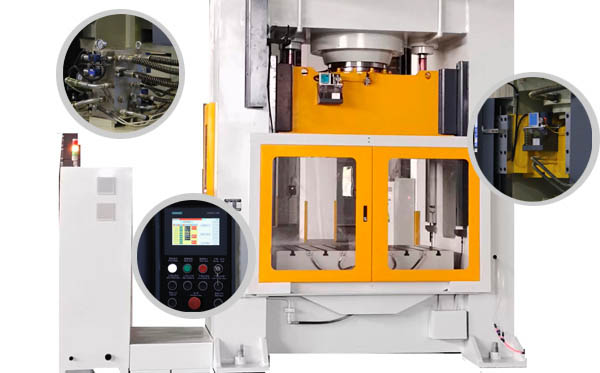Drive Core Elements of Hydraulic PressUpdate:2024-12-09 Hits:138
The drive of hydraulic press mainly involves 3 core elements: pressure, flow and power source.● Pressure
Definition and principle: Pressure refers to the force acting vertically on a unit area. In a hydraulic press, pressure is transmitted through liquid (usually hydraulic oil). According to Pascal's law, in a closed liquid system, the pressure applied to a stationary liquid can be transmitted in all directions without changing its size. For example, when a small force is applied to the small piston of a hydraulic press, this force will generate a certain pressure. Due to the incompressibility of the liquid, this pressure will be transmitted to the large piston connected to the small piston, and a larger force will be generated on the large piston, thereby achieving the amplification of force. The pressure of the hydraulic press determines the size of the force it can generate, which is crucial for tasks that require greater pressure, such as metal forming and pressure testing.
Units and measurements: The unit of pressure is Pascal (Pa), but in hydraulic systems, megapascals (MPa) are also commonly used. Pressure gauges are usually used to measure pressure in hydraulic systems.

● Flow
Definition and principle: Flow refers to the volume of liquid passing through a certain cross section per unit time. In a hydraulic press, the flow rate determines the speed of movement of the hydraulic actuator (such as a hydraulic cylinder). The flow rate of the hydraulic oil is proportional to the speed of movement of the hydraulic cylinder piston. For example, if the working part of the hydraulic press (such as a punch) needs to be extended or retracted quickly, a large flow rate is required to ensure its movement speed.
Units and measurements: The unit of flow is cubic meters per second (m³/s), and the more commonly used unit in hydraulic systems is liters per minute (L/min). The flow rate in a hydraulic system can be measured by a flow sensor.
● Power source
Definition and principle: The power source is a device that provides energy to the hydraulic system, usually a hydraulic pump. The function of the hydraulic pump is to convert mechanical energy into hydraulic energy, suck the hydraulic oil in the tank and generate a certain pressure and flow through the action of the pump, and then deliver it to various parts of the hydraulic system. Common hydraulic pumps include gear pumps, vane pumps, and plunger pumps. For example, a gear pump delivers hydraulic oil through the meshing movement of gears. It has the characteristics of simple structure and low cost; a plunger pump can provide higher pressure and more precise flow control, and is often used in hydraulic systems with high pressure and flow requirements.
Energy conversion and efficiency: The performance of the power source directly affects the working efficiency and performance of the hydraulic press. During the energy conversion process, there will be a certain amount of energy loss, mainly including volume loss (the actual output flow is less than the theoretical flow due to leakage and other reasons) and mechanical loss (energy loss due to friction inside the pump and other reasons). Therefore, improving the efficiency of the power source is very important for energy saving and efficient operation of the hydraulic press.

